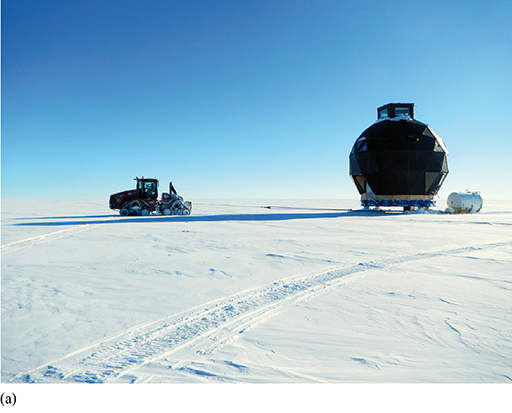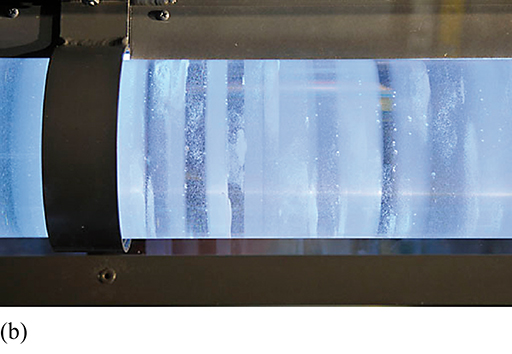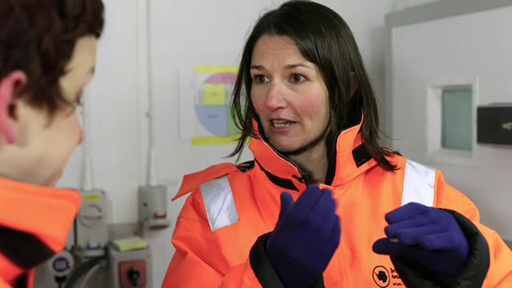3 The ice time machine
Snowfall differs depending on whether it falls in summer (when snow is comparatively warm and moist) or winter (when snow is cold and dry). These differences mean that when snow turns into ice, on the surfaces of glaciers and ice sheets, it is possible to see distinct annual layers. The layers are in a sense similar to tree rings: thick annual layers mean high snowfall, and thin annual layers mean low snowfall.
The accumulation of snowfall on the Greenland and Antarctic ice sheets – and most importantly what is trapped within the crystals as it turns to ice – can provide a record of the past. Digging down into the ice cap is equivalent to going back in time through the snowfall of previous years and you have to dig down a long way (equivalent perhaps to 300 years of snowfall) before reaching the ice.
To make the digging back in time easier, a drilling rig that extracts ice cores about 13 cm in diameter is used to get to very deep levels (Figure 10(a)). Once extracted, the annual layers in the cores are clear (Figure 10(b)).


The British Antarctic Survey (BAS) is world renowned for its polar research, including analysis of ice cores. Video 3 visits the BAS research laboratories in Cambridge, UK where Liz Thomas, head of ice core research at BAS, explains how ice cores can provide a time capsule of past snow falls that record what past atmosphere and climates were like.

Transcript: Video 3 British Antarctic Survey (BAS) and its polar research
The next section shows you how ice cores are extracted and illustrates how data from ice core analyses can be used to help develop our understanding of past atmospheric conditions.
